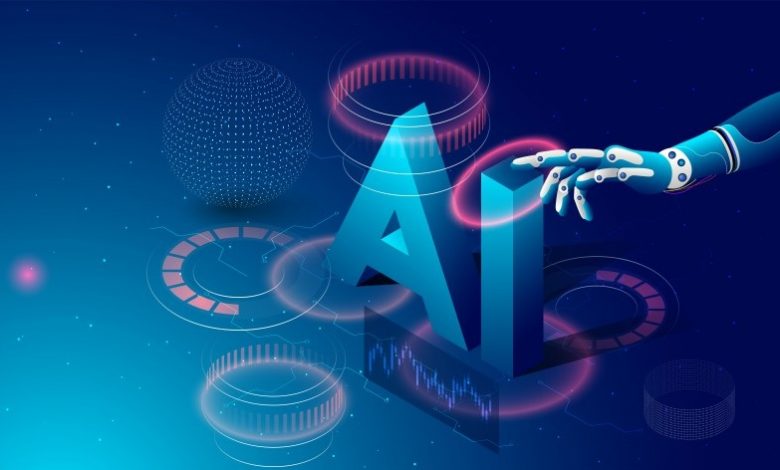AI Development and OCR

Exactly how optical character recognition is being revitalised
Optical character recognition tools are going through a peaceful change as ambitious software application service providers combine OCR with AI. Therefore, information catching software applications are all at once recording details as well as understanding the material. In practice this implies that AI tools can check for blunders independent of a human-user offering structured fault management.
Template-based OCR vs AI solutions
The most usual form of template-based Optical Character Recognition works by going into the works with the message they want to tape from a physical file. After entering this into the Optical Character Recognition system the selected message is discovered and after that videotaped in a digital format like a PDF. The minute the individual has actually ended up configuring their OCR settings they have an automatic service for developing digital duplicates of physical papers.
The precision of OCR hinges on the quality of the initial record. For keyed in messages, many platforms preserve a 98 or 99% price of accuracy. The rate of accuracy is bothersome as little errors can result in the loss of essential information factors. For instance if you tape an invoice that omits or inaccurately videotapes the name or rate, that record is as good as useless.
Under typical OCR, the customer’s only choice to raise the integrity of scans is to manually determine as well as keep an eye on the outcomes. AI remedies can do this instantly while drawing understandings from the text. Simply put, they can refine document web content more thoroughly.
The next generation: AI satisfies OCR
OCR devices are undergoing a silent transformation as enthusiastic software application development company combine them with AI. Consequently, data catching software is concurrently catching info as well as understanding the material. In practice this means that AI tools can look for mistakes independent of a human-user supplying streamlined fault monitoring.
But how do these devices function? The response is somewhat different relying on which AI system you’re making use of. One comprehensive study of just how AI is used to enhance Optical Character Recognition can be found in Infrrd’s deal with an international investment company. Infrrd IDC, a crossbreed AI and also Optical Character Recognition device was utilized to aid handling financial reports. The tool was made use of to duplicate monetary reports from numerous languages and equate them into English.
To do this, Infrrd utilized a mix of artificial intelligence and Computer Vision development formulas. These formulas were utilized to analyse record layout throughout pre-processing to identify what info was to be recorded. An Optical Character Recognition engine was then used to extract messages from the scanned paper. The documents were after that translated with the help of a Deep Neural Network making use of real-time data to make certain accuracy.
Without the assistance of AI, such records would need to be taken care of by specific workers and examined by a translator. By including AI with an OCR service, Infrrd was able to reduce the administrative worries of the investment company’s staff members. There are numerous various other examples of firms utilizing AI and OCR this way.
Softworks AI, collaborated with a Fortune 500 bank to simplify the management of home loan documents. The financial institution was looking for a remedy that would certainly automate record production as well as help to identify high concern loans. Softworks AI utilized AI to determine those fundings that needed to be managed swiftly as well as decrease funding handling times from 2 hours to 5 minutes.
OCR as well as AI: Th force for electronic transformation
At once, Optical Character Recognition was embraced as a turbulent new technology that automated hands-on service processes. The growth of AI has actually led contemporary businesses to raise their expectations of what automation can achieve. OCR engines that require to be taken care of by human individuals are starting to be outmatched by those that utilize AI to look out for errors.
Before there was Optical Character Recognition and also AI working together, back in the 1990s, optical character recognition or Optical Character Recognition was already in vast use. Optical Character Recognition contributed in aiding company owners to automate the processing of taking care of physical papers. With Optical Character Recognition, enterprises started to use software programs to check papers like invoices and create electronic duplicates.
Today, Optical Character Recognition platforms are still utilized to transform transcribed or published messages into machine-encoded text to ensure that it can be accessed on a computer system. Optical Character Recognition platforms make copies of papers like invoices, bank statements, passports and also other types of documents that need to be taken care of. If you have actually ever changed a text right into a PDF with a program like Adobe Acrobat, then you’ve utilized Optical Character Recognition.
The top quality of OCR has progressively improved ever since it was produced. Sadly the demands of modern business have quickly outstripped its growth. Businesses are beginning to look to AI-driven options to boost their efficiency and also remove significance. Merely producing layouts of files is no longer enough; ventures desire insights as well.Combining AI and Optical Character Recognition with each other is verifying to be a winning technique for both data capture and also monitoring. While AI-based OCR devices may not be as glamorous as various other transformative innovations they will certainly have a considerable influence on the bottom line of companies that welcome them. Reducing management is crucial to making staff members much more productive.
AI OCR devices are sleeping giants in the larger topic of digital transformation. They have the prospective to help numerous organisations to automate the handling and error-checking of physical documents. Technologies that reduce expenses as well as raise efficiency are always in high demand.

